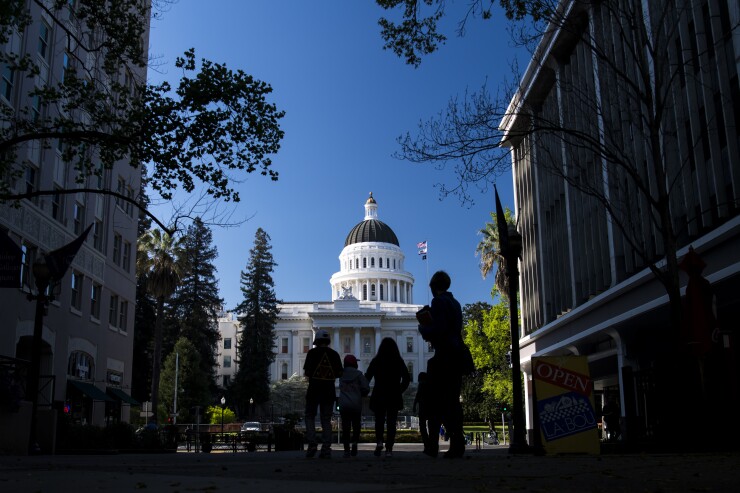State tax revenue collections are softening and some are even negative compared to a year earlier, analysts say.
“Most states are now grappling with weakened tax revenues and growing uncertainties, particularly related to the presidential election, potential federal policy changes, and geopolitical crises,” said Urban Institute Principal Research Associate Lucy Dadayan.
“Overall, growth in state tax revenues has moderated substantially in the first half of fiscal year 2024,” Dadayan said. “The weakness in state tax revenues is largely due to
Bloomberg News
Revenues fell 0.1% from a year earlier and declined 2.6% in inflation-adjusted terms, according to Dadayan’s report on January revenues, released recently. December revenues fell 1.4% from a year earlier and 4.5% in inflation-adjusted terms.
Revenue growth has been weak in “the first half of fiscal 2024, with many states reporting declines from last year,” said Fitch Ratings Director Tammy Gamerman. “
While revenue collections are softening, S&P Global Ratings Managing Director Geoff Buswick said, “To date it’s still about 50/50 if a state is hitting or missing their revenue targets.”
Generally, collections “are not off by much,” whether hitting or missing, Buswick said. In some cases, he said, “the miss is leading to current year budget actions,” but many states have used reserves to cover.
“We are watching to see how revenues are forecast for fiscal 2025 and if the revenue softening creates budgetary challenges with expenditure increases possibly outpacing the revenue growth,” Buswick said. “We are particularly watching those states that have instituted permanent tax cuts during the recent period of strong revenue growth.”
On Wednesday CreditSights released a report on sales tax, personal income tax, property tax, and commercial income tax revenues for state and local governments. Total revenues for these four categories for the states were up 7% in the fourth quarter of 2023 compared to the fourth quarter of 2022, according to U.S. Census Bureau statistics.
For the states the “most important takeaway” is revenue variability, said CreditSights Senior Municipal Strategist Pat Luby. Comparing 2023 to 2022, revenues were up in 17 states plus the District of Columbia, down in 30 states, and even in three. The states with the biggest declines were: Alaska (down 50%),
Asked about revenue trends, KBRA Senior Director Michael Taylor said sales taxes “moderated” in the second half probably due to the wane of the pandemic stimulus-fueled surge in consumption and the effects of increasing interest rates.
